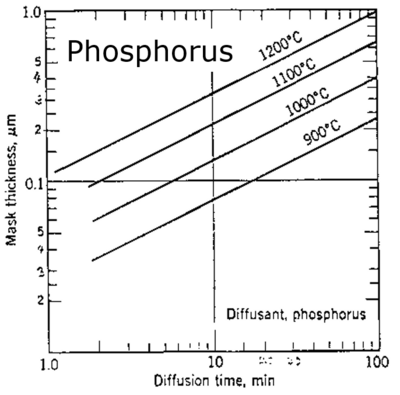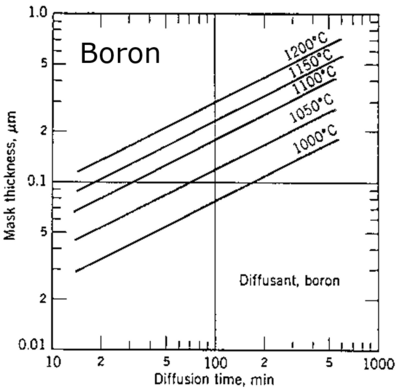Specific Process Knowledge/Thermal Process/Oxide mask: Difference between revisions
Appearance
| Line 1: | Line 1: | ||
==Oxide mask thickness== | ==Oxide mask thickness== | ||
A thermal oxide mask can protect areas from diffusion during a pre deposition and drive in process. | A thermal oxide mask can protect areas from diffusion during a pre deposition and drive in process. It can also be used during a PECVD based diffusion process. The required oxide thickness differs between phosphorous and boron diffusion as the respective diffusion coefficients are different. The figures below indicate the minimum thermal oxide thickness to be used based on temperature and diffusion time. | ||
[[File:phosphorous-mask.PNG|400px]] | [[File:phosphorous-mask.PNG|400px]] | ||
[[File:boron-mask.PNG|400px]] | [[File:boron-mask.PNG|400px]] | ||
Revision as of 12:55, 28 January 2019
Oxide mask thickness
A thermal oxide mask can protect areas from diffusion during a pre deposition and drive in process. It can also be used during a PECVD based diffusion process. The required oxide thickness differs between phosphorous and boron diffusion as the respective diffusion coefficients are different. The figures below indicate the minimum thermal oxide thickness to be used based on temperature and diffusion time.


